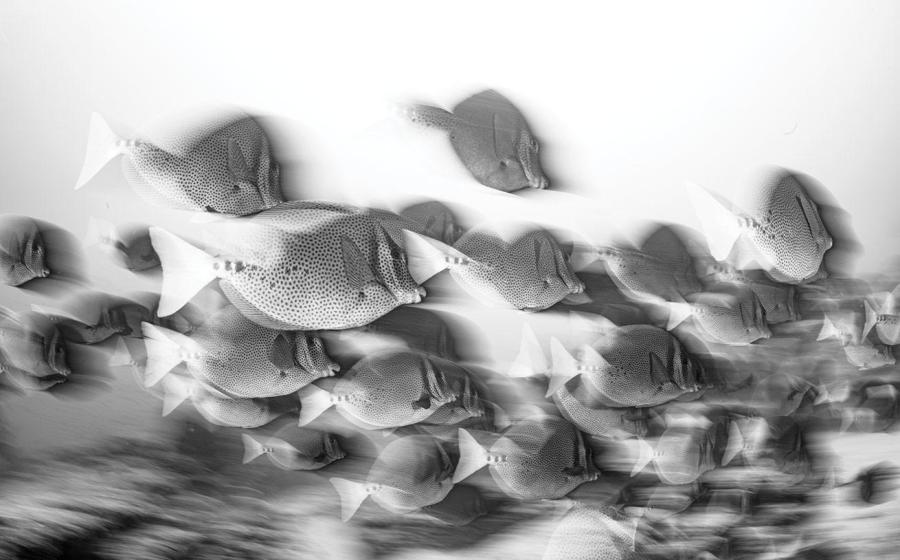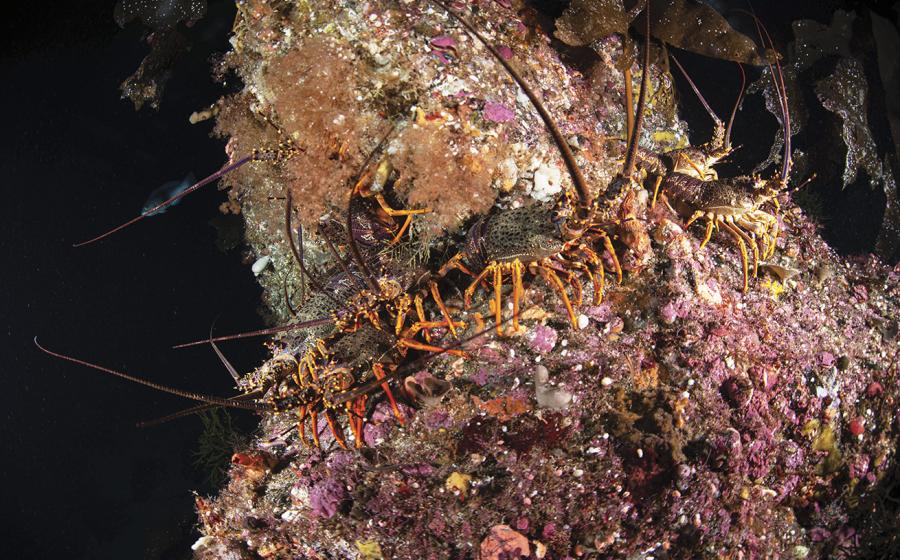Hairy Frogfish Images and Facts
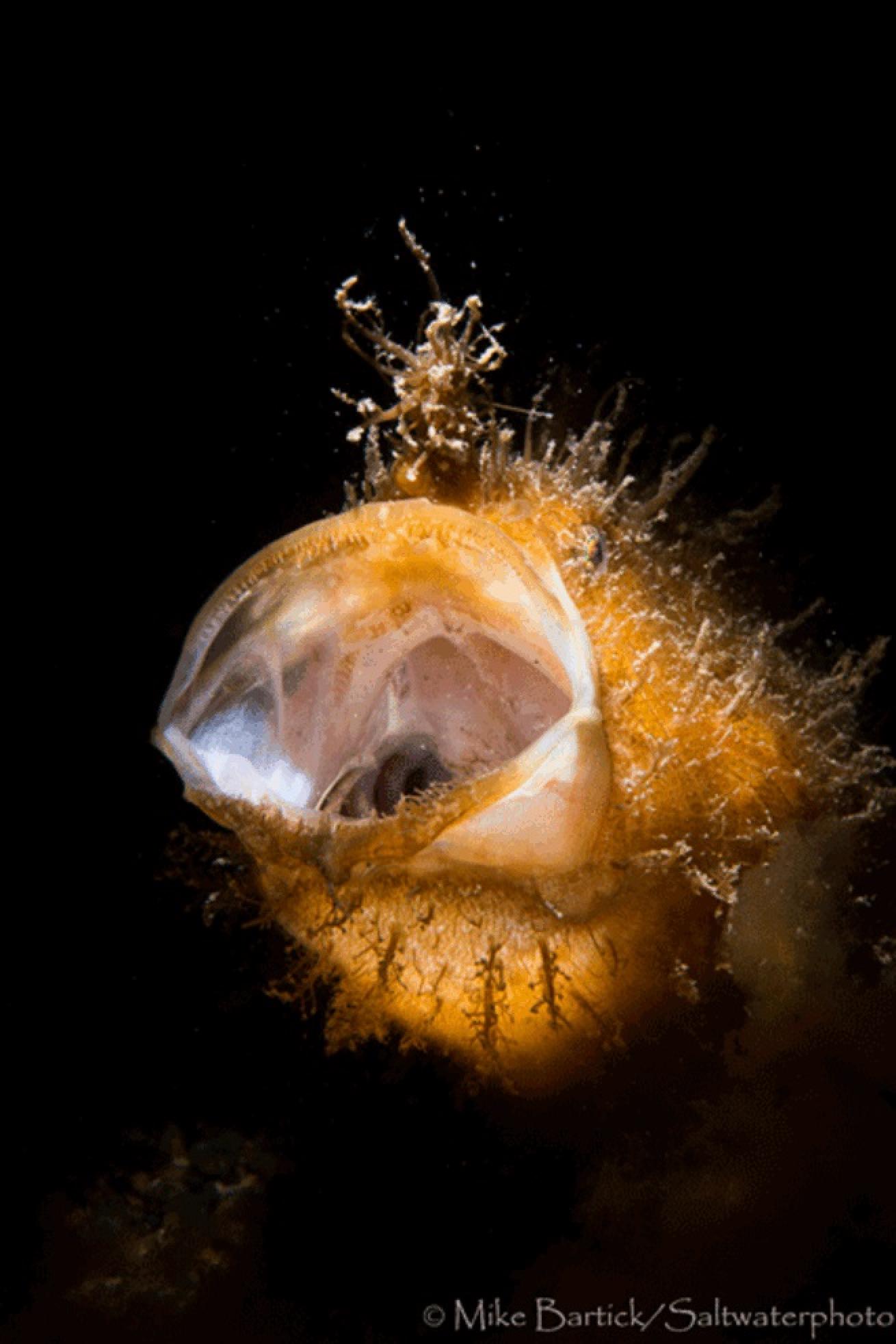
Mike BartickHairy Frogfish
Thought to be a sign of stress or perhaps an attempt to make itself appear larger, an_ A.striatus_ shows me its massive, cavernous mouth. This is one of the key factors that make hairy frogfish a Holy Grail critter for underwater photographers and a favorite for me. Coupled with its other unique behaviors, this eloquent sophisticate is always at the top of my list.
Related Reading: Getting to Know Greenland's Frosty Critters

Mike BartickHairy Frogfish
Hairy frogfish lures vary greatly depending on the type of frogfish you’re looking at. The worm-like lure is most common found on the A.striatus. Disproportionately oversized, the lure is quite effective in attracting prey.
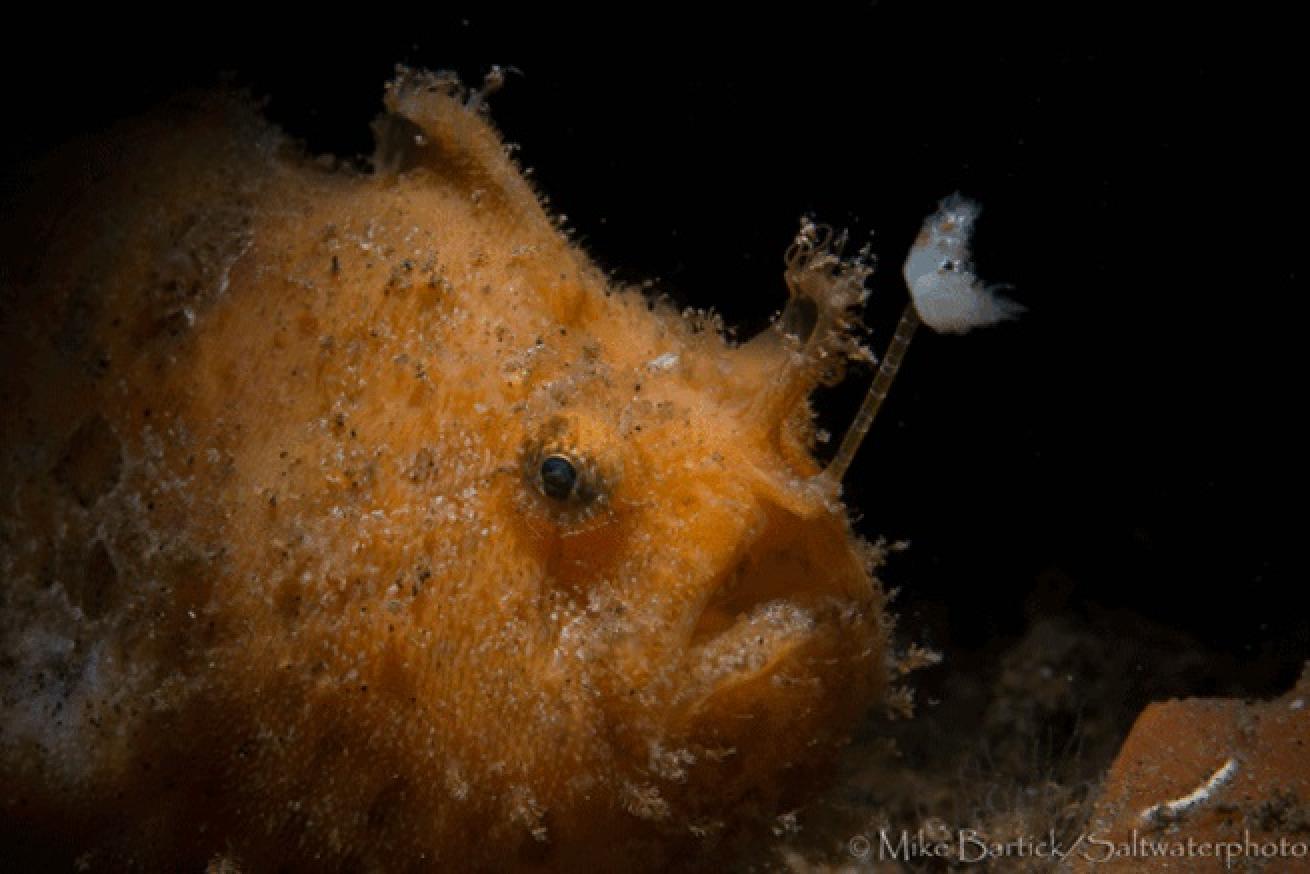
Mike BartickHairy Frogfish
With its shrimp-like lure and lack of spinules, the A. striatus can be easily confused with other frogfish. The distinct patterns on its body can also be very faint which also creates confusion for proper ID.
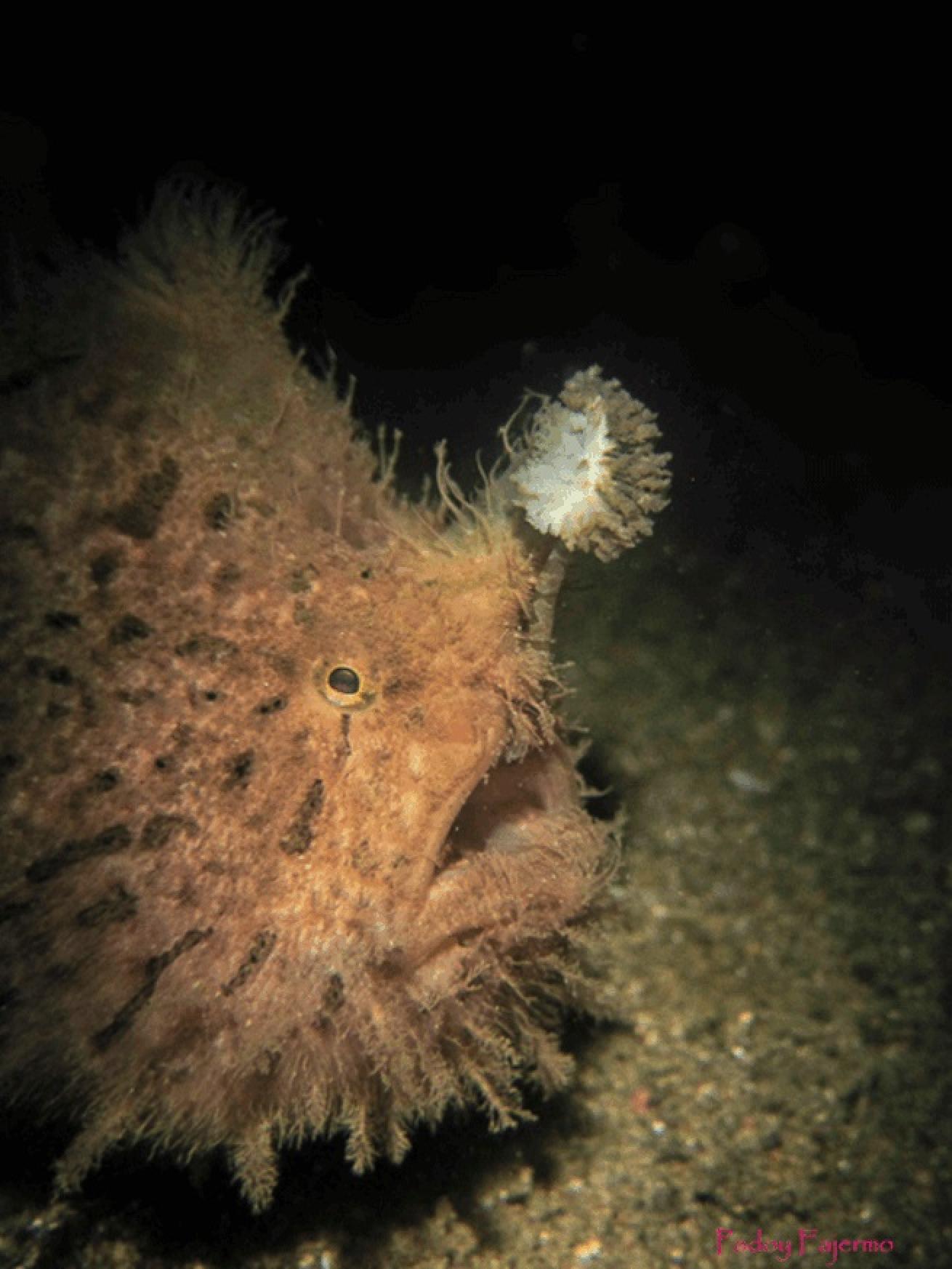
Mike BartickHairy Frogfish
While the A. hispidus has a large, rounded lure that sets it apart from the others in its group, its body colorations are identical. Often referred to as a “Pom-pom” hairy frogfish, the A. hispidus is rarely seen.
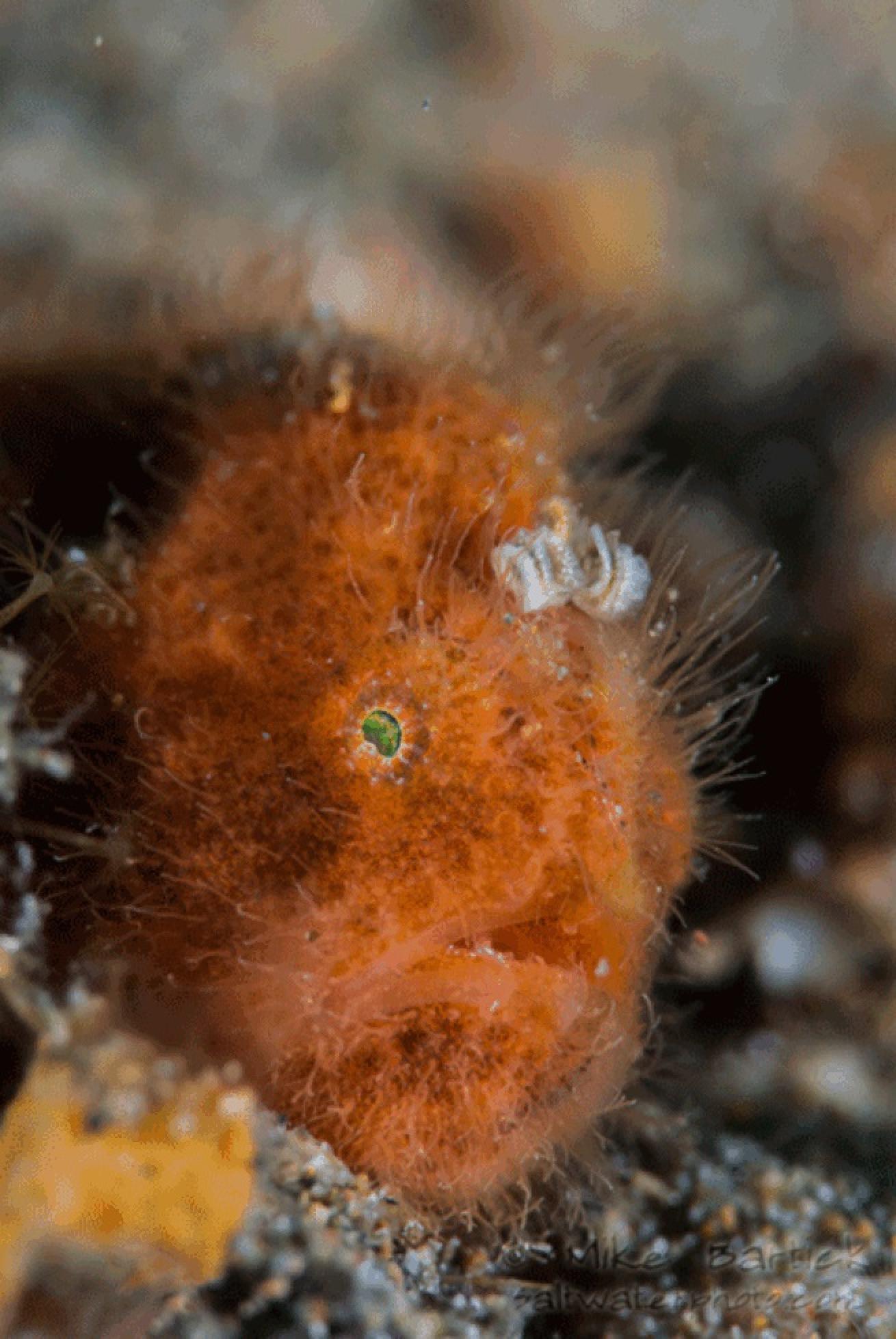
Mike BartickHairy Frogfish
Hairy frogfish range in size and most have their hair growth right from the beginning. Adapting quickly, they begin hunting as soon as they hatch from their eggs, gulping down anything for protein. Using their rod and lure, frogfish like this juvenile A.striatus hunt smaller shrimps and sometimes other newly-hatched siblings from the same brood.
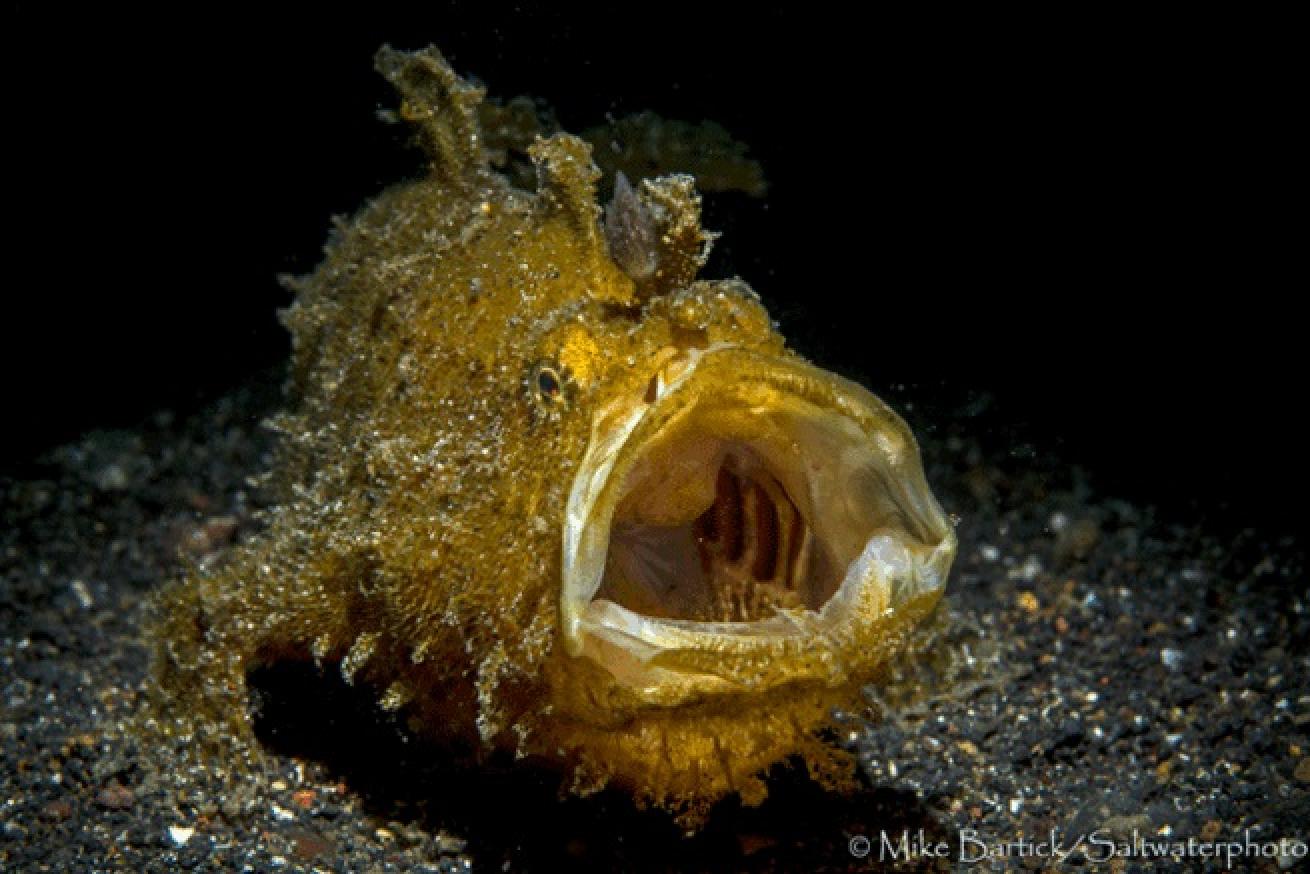
Mike BartickHairy Frogfish
In the last 12 months, I’ve encountered what seems to be a new variety of hairy frogfish both in Anilao and then later in Lembeh, simply named a “short hair." Like other hairy frogfish, this guy has personality.
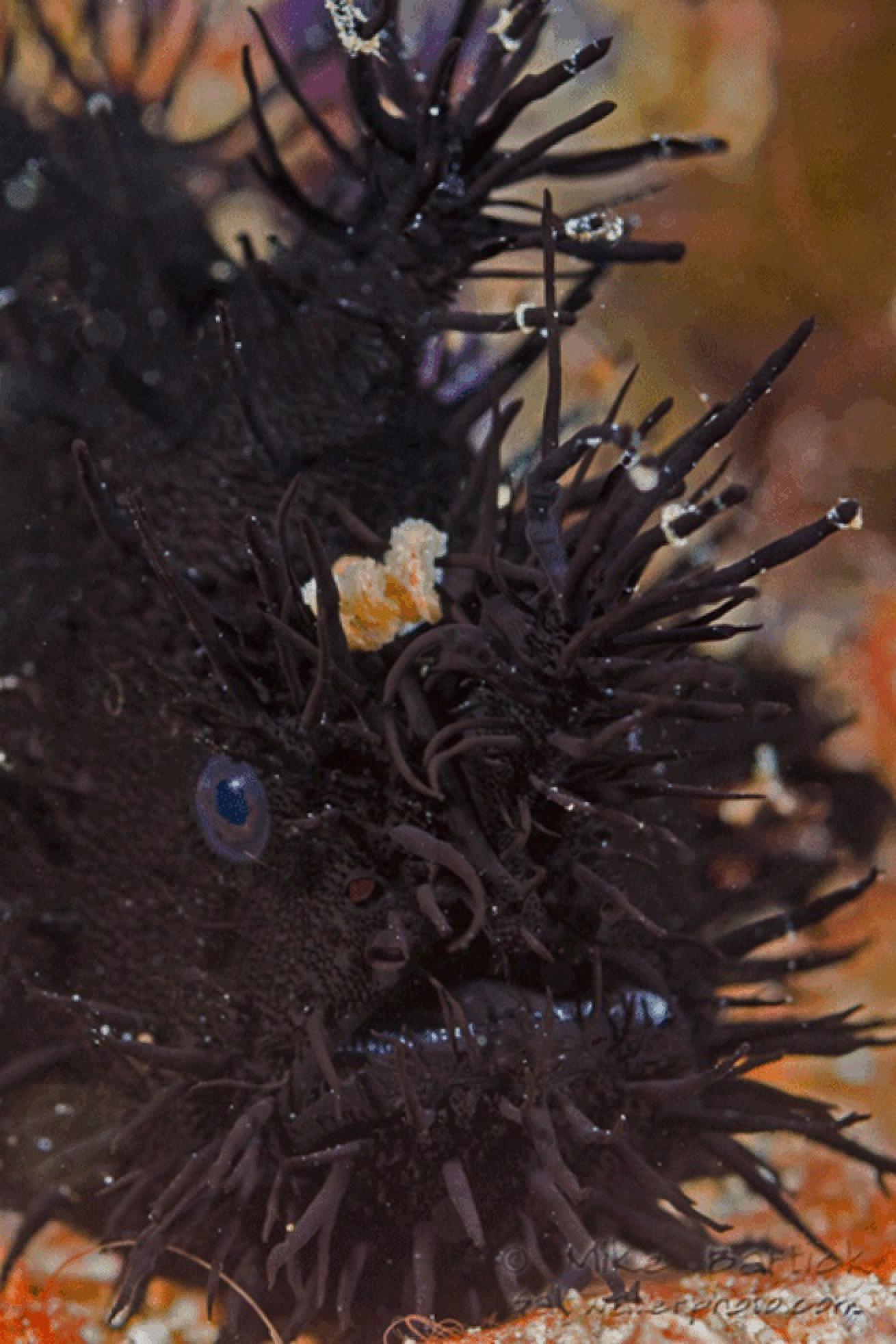
Mike BartickHairy Frogfish
Knowing how rare a true black A.striatus is, I was surprised and excited when one showed up on a neighboring island. We were lucky enough to find it again and observe it for a few days before it moved on.
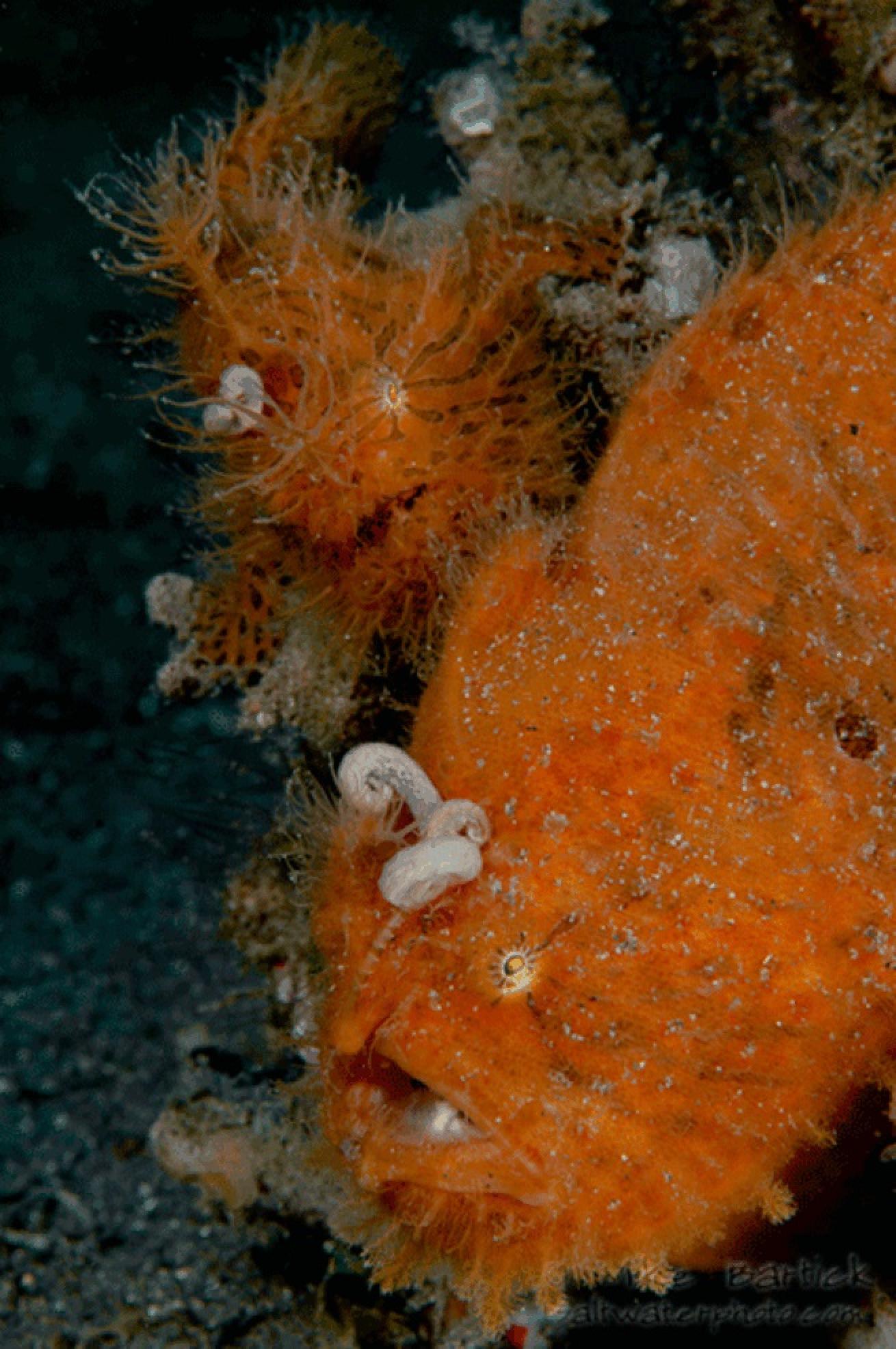
Mike BartickHairy Frogfish
A female and male_ A.striatus_ are paired together to mate. This is the only time that frogfish will come together without striking out. All frogfish are dangerously antisocial and don’t play well with others. The male is the smaller of the two in this image. Both become bright orange just prior to spawning.
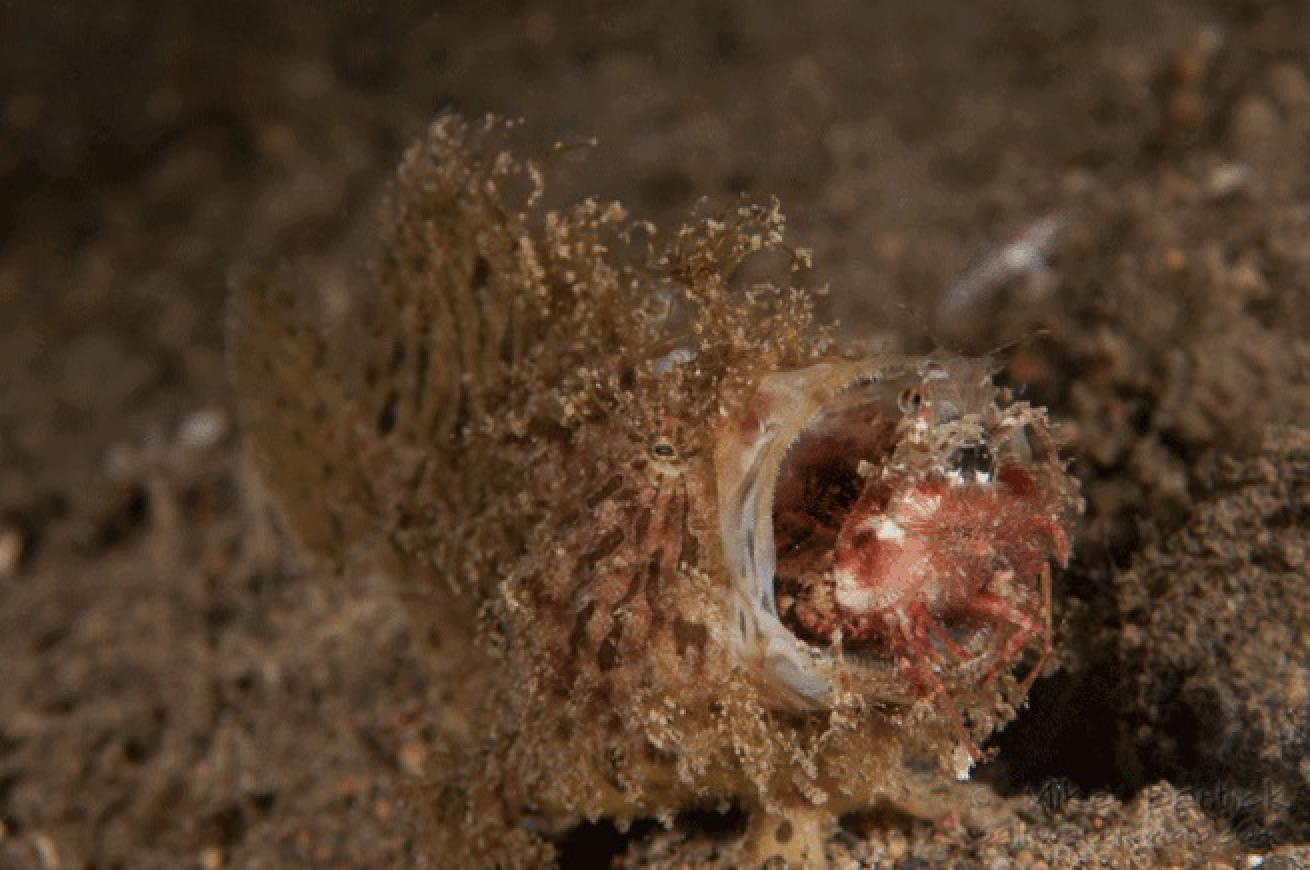
Mike BartickHairy Frogfish
A yellow A. Striatus struggles to swallow a large marbled shrimp. The shrimp flared its spines preventing itself from being swallowed backwards. After several minutes the frogfish spit the shrimp out, and then re-attracted it. The shrimp apparently couldn’t resist and was eventually gulped down head first.
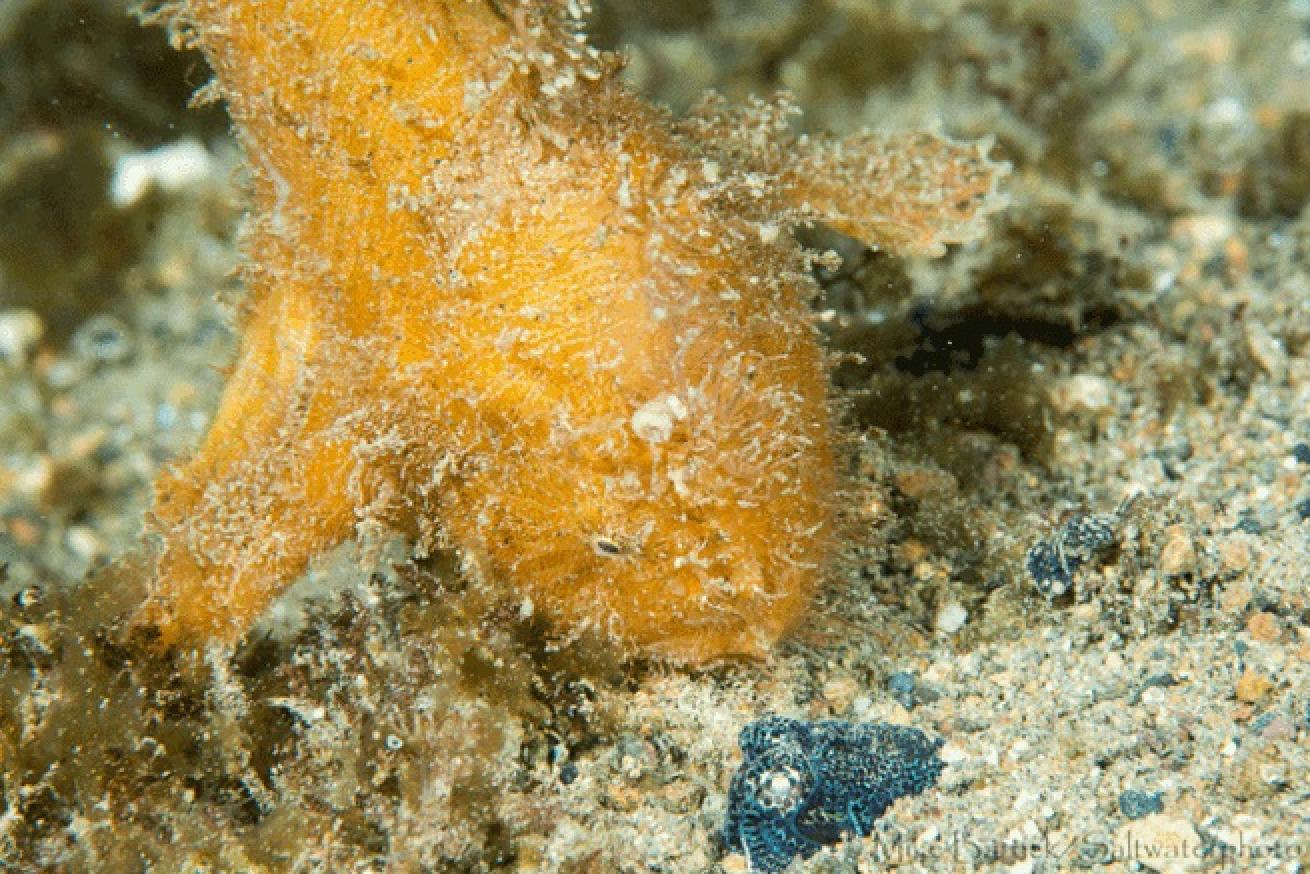
Mike BartickHairy Frogfish
A small Astriatus lines up on a bobtailed squid. Slowly leaning forward, almost motionless, the frogfish launches its attack. The strike speed of frogfish has been recorded at 6 milliseconds, making it one of the fastest striking creatures on earth.

Mike BartickHairy Frogfish
The gape strike of the frogfish is so effective that it’s nearly impossible to escape the strike zone. Dropping and extending its jaw with lightning-quick speed, the frogfish overwhelms and consumes its prey with surprise and force. Frogfish actually engage their stomach muscles simultaneously and crush their victims all in one movement. The only teeth they have are positioned backwards to prevent a subject from escaping.
I suppose it’s no surprise that Hairy Frogfish are some of the most popular critters around the world for underwater photographers. Their distinct features, handsome looks, and photogenic behaviors are hard to resist. But it doesn’t just stop with their good looks. Hairy Frogfish, described as Antennarius Striatus, are a little more complex than the average run of the mill anglerfish. These regal, bottom-dwelling carnivores are veracious predators and keen hunters with an insatiable appetite for fresh fish and seafood.
Only a small handful of anglerfish are found nearly circumglobally and include the hairy frogfish family. The adaptive group of the Antennarius striatus includes the A. striatus, A. hispidus and A. inducus. All three are very are closely related and can range from the Atlantic Ocean, from New Jersey to Brazil, to the Caribbean and the Indo-Pacific_._
A whirlwind of confusion for proper identification seems to emanate from the fact that frogfish so easily adapt to their environment. Colors can swing from pale white to yellow, dark orange, pink, black and a variety of others with a main feature of striations or small dots along a frogfish's entire body. The lure can also change in shape and vary (with the exception of the A. hispidus) depending on the region, habitat or the food source in the particular area. The lure can also be damaged due to fast and hungry prey gnawing off pieces of the lure before the frogfish can pull it away. These key features are further confused as they can change rapidly over a very short period of time, or not at all, remaining the same indefinitely.
“Spinules” or small spines are a hair-like structure which give these frogfish their name. The “hair” actually grows right from its soft skin tissue with a variance in density from abundant to hardly any at all.
Shallow dive sites with an abundance of algae growth such as estuaries or areas with fluctuating salinity levels seem to be a favorite among hairy frogfish, and are a great place to locate them. But hairy frogfish also live in deeper waters and have been found at depths of 600 feet.
Related Reading: What It's Like to Be an Underwater Photographer in Ningaloo Reef
Predators by design
Frogfish (common name derived from Batrachoidiae or toadfish) are crafty predators that are well designed for ambushing their prey by using “lying and wait” hunting tactics and employing several strategies to atract heir prey without exerting too much energy. They rarely, if ever, swim while hunting, and assume a more stationary position. Frogfish are known for lightning fast strike speeds.
Tools of the trade
Located just above their upturned mouth is the fishing-rod-like apparatus that is used to attract prey. The rod or (illicium) supports the lure (esca) and is formed by the detached forward dorsal spines. The lure style can change too, depending on the type of frogfish. For instance, the oversized, worm-like lure of the striped hairy frogfish (A. striatus) differs from the ball shaped lure of the (A.hispidus.)
The hunter
When hunting, hairy frogfish will position themselves in front of or above suspected burrows and dangle their bait. A gland near the lure also releases a chemical attractant to create a second form of stimulation to entice their prey. Another hunting tactic is hiding amongst spiny urchins with the lure extended upwards and launching attacks on cardinal fish. They even hunt while on the move on open sand, usually with the current coming from behind. This carries the released attractant as they trundle about on their walking pelvic fins, luring and snatching fish that enter or are caught in the strike zone.
Want more cool critters?
Pipefish | Mamas and Papas | Cuttlefish





